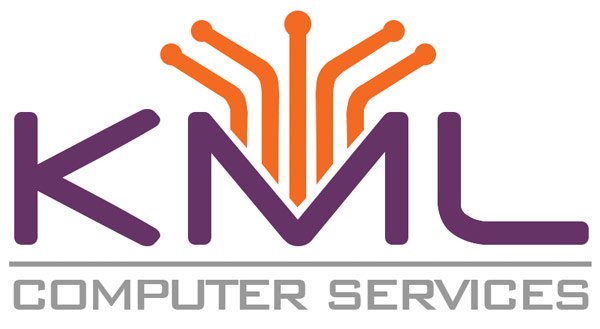
In today’s digital world, your email account is more than a communication tool, it’s often the gateway to your entire business. From banking and payroll to vendor logins and client communication, one compromised inbox can be all it takes for cybercriminals to wreak havoc.
Unfortunately, email attacks are becoming more targeted, stealthy, and damaging. And for users with local admin privileges or Microsoft 365 admin rights, the risk of compromise increases exponentially. These elevated permissions give attackers the keys to much more than your inbox, they open the door to your entire IT environment.
KML Computer Services helps businesses across South Carolina and Michigan detect and respond to email-based threats. But how can you tell if your email has already been hacked, and what steps actually make a difference?
7 Warning Signs Your Email May Be Compromised
- You Can’t Log In
If your password stops working and you didn’t change it, there’s a good chance someone else did, likely to lock you out. - Suspicious Messages Sent From Your Account
Clients or coworkers receiving strange emails, especially with links or attachments, from you? That’s a major red flag. - Login Alerts From Unknown Devices or Locations
Microsoft 365 and most providers send security alerts for logins from new places. If you’re seeing access from unfamiliar cities or countries, investigate immediately. - Unprompted Password Reset Notifications
Getting password reset emails you didn’t initiate, especially for financial or cloud accounts, can mean your email is being used to gain access elsewhere. - Email Settings Have Been Modified
Forwarding rules, mailbox permissions, and recovery email changes are tactics attackers use to retain access even after a password reset. - Missing or Deleted Messages
Hackers often delete alerts and activity logs to cover their tracks. If messages are disappearing or your sent folder looks off, don’t ignore it. - No Obvious Signs, But Something Feels Off
Unfortunately, the most advanced compromises may not show obvious symptoms. That’s why log reviews and event correlation across your tenant are crucial to spotting long-term infiltration.
Why Just Changing Your Password Isn’t Enough
Many users think the fix is simple: change your password, turn on MFA, and move on.
But that approach can leave you dangerously exposed.
If an attacker has added forwarding rules, registered rogue apps, or accessed your Microsoft 365 admin portal, they can retain access long after your password is changed. This is especially true if the compromised user has admin rights or elevated access, in these cases, you need a full forensic-style review of your audit logs and account configuration.
The truth is, only detailed log analysis will confirm whether you’re truly in the clear. Email account breaches often require a layered response that includes:
- Tenant-level audit log review
- App and permission inventory
- Rule and inbox behavior analysis
- Endpoint investigation
- Event correlation over time
Why a Compromised Email Is a Business-Critical Threat
An email breach doesn’t stop with one inbox. It can quickly lead to:
- Business Email Compromise (BEC) schemes
- Invoice fraud and unauthorized transactions
- Exposure of sensitive data or client records
- Unauthorized access to cloud apps and services
- Brand and reputation damage
- Legal and compliance liabilities
And if the attacker establishes a foothold before you detect it, they can return, even after you “clean up” the initial symptoms.
What to Do If You Suspect a Breach
If you think your email account may have been compromised:
- Change your password immediately using a long, unique phrase
- Enable Multi-Factor Authentication (MFA) if not already set up
- Review your mailbox settings, rules, delegations, and forwarding
- Check for unauthorized logins and connected applications
- Scan your devices for malware and keyloggers
- Notify your contacts to prevent further damage
- Contact KML Computer Services to initiate a thorough investigation
Why KML Should Be Your First Call
KML doesn’t just react to symptoms, we dig into root causes. Our security-focused team investigates behind the scenes, reviewing logs, correlating data, and helping you lock down your environment for good.
With KML, you get:
✔ Expert log and threat analysis by trained security professionals
✔ Microsoft 365 configuration reviews and forensic assessments
✔ Advanced email security to stop phishing, spoofing, and malware
✔ Endpoint protection across your network
✔ 24/7 monitoring for ongoing threat detection
✔ Security training to educate your team and reduce future risk
✔ Backup and recovery guidance to minimize downtime
We help you determine if you were hacked, how deep the compromise goes, and how to fully secure your systems moving forward.
Learn more about KML Computer Service’s Cybersecurity Solutions
Don’t Just Guess—Get Answers You Can Trust
Whether you’ve noticed warning signs or just have a gut feeling that something’s not right, don’t go it alone. If elevated privileges are involved, the chances of damage grow significantly, and without proper review, those risks remain hidden.
Let KML Computer Services give you clarity and control.
We’ll assess your Microsoft 365 tenant, help identify exposure points, and give you a roadmap to recover and strengthen your defenses.
Concerned About Your Email Security? Let’s Talk.
Don’t wait for damage to surface. If something feels off, or you want to stay ahead of threats, reach out to KML for a security consultation.
📞 Call us or fill out our form to submit a review!
Mark Rossi is president of KML Computer Services. Since 1996 he has been immersed in the technology field, working in various positions, from hardware technician and network manager to network engineer and IT consultant.

